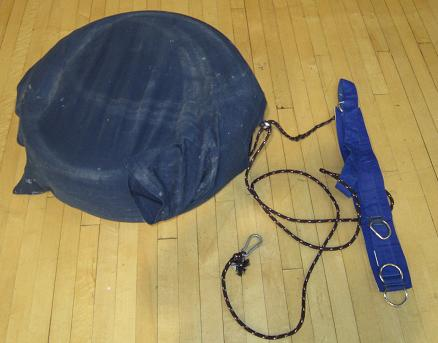by Art Horne
About one year ago, a question on conditioning came up among a small community of strength coaches and friends. From this the idea of EVERYTHING BASKETBALL was born. Today, EVERYTHING BASKETBALL continues to highlight the very best basketball professionals from across North America from all professional backgrounds and affiliations.
Thanks for continuing to share your ideas, videos and training advice.
The first question
______________________________________________________
Coaches,
I'm starting to put together my pre-season conditioning program for hoops and wanted to know if any of you have ever done the sideline ladder drill and if so, twice?
For example - one time up and down the ladder is this:
2,4,8,12,16,12,8,4,2
I want to put a progression together where we go up and down the ladder twice. Didn't know if this is too much or even reasonable.
Please let me know what you all think (even if I'm crazy to think this) and what your experience is with this.
If you could reply to all that would be great - that way we could all learn from this.
Thanks and I hope everybody is having a great summer,
B
--
Brijesh Patel
Head Strength and Conditioning Coach
Quinnipiac University
_______________________________________________________
B,
I will try to be brief and elaborate later if you would like. I am out of town and typing on a blackberry. I have used ladders in the past and they have predominantly been of the full-court variety for many of the reasons Shawn pointed out with change of direction.
The last couple of years I've been utilizing the heart rate monitors during our energy system development like Ray and have been doing a tempo/ladder type drills during the pre-season. I have always been more concerned about the total volume and how to manipulate it in conjunction with pick-up games.
I attempt to mimic the variety of distances and duration of efforts we incur in competition while still managing volume I have done sets of 3-5 repetitions for 4-6 total sets of varying distances. We know the court is roughly 30 meters. We can do runs of 30m(1), 60m(2), 105m(3.5), 150m(5), and 210m(7) at different gears (% of effort)in a set in any sequence or combination with varying amounts of active rest (1:1, 1:2, etc)between reps. Between sets is active recovery usually 120sec, about the amount of time for a TV timeout or foul called and free throws. I have found that the HR data and reports after show we have taxed both systems and the graphs look like those of game play. Doing it this way I can track the accumulated volume and adjust based on much playing and individuals they are doing and the HR data can give me signs of overreaching if we are doing too much.
I can go over the progression and other components of some the ESD with you next week if you want to call.
Mike
Mike Curtis, M.Ed., CSCS, USAW, SCCC, NASM-PES, CES Head Strength & Conditioning Coach, Men's Basketball University of Virginia Athletics
__________________________________________________________________________
Brijesh – Ray Eady (Wisconsin) and I were talking last night and he thought that maybe the women needed more change of direction so that they learn how to move more appropriately and transfer force, etc better... more turns means more reps/opportunities for learning? Or more opportunity to get hurt?
What do you think?
Art Horne
Northeastern University
_______________________________________________________
Art
That's a great point and I was thinking of that too - I like them performing more change of directions to make them more "athletic" but also worry about all the eccentric contractions.
I think I'm going to stick with the sideline but go with Ray and take out the "12" so we'll go:
2, 4, 8, 16
And work up to doing 3-4 sets of that....I may not go down the ladder but just go up like Ray does.
What do you do for pre-season condo?
Brijesh Patel
_______________________________________________________
Brijesh:
Ill have to send you the stuff, but basically we do five days.
- We perform your metabolic conditioning sequence to end each week prior to the beginning of practice so I think we are on week 6 now?
- slide board/bike combos (because we don't have enough of either so we split then switch) slide board 30:30, bike 20:40 on:off
- speed/metabolic with tire runs, sleds and prowlers
- lastly a plate circuit that has a tremendous effect which starts at 20:40, 30:30, and ends with 40:20
- On Sundays we do a pool day which is mostly movement based and acts as a recovery but we finish with some conditioning then too.
Art
_______________________________________________________
As they say the rest is history……..
Best of luck this basketball season.

